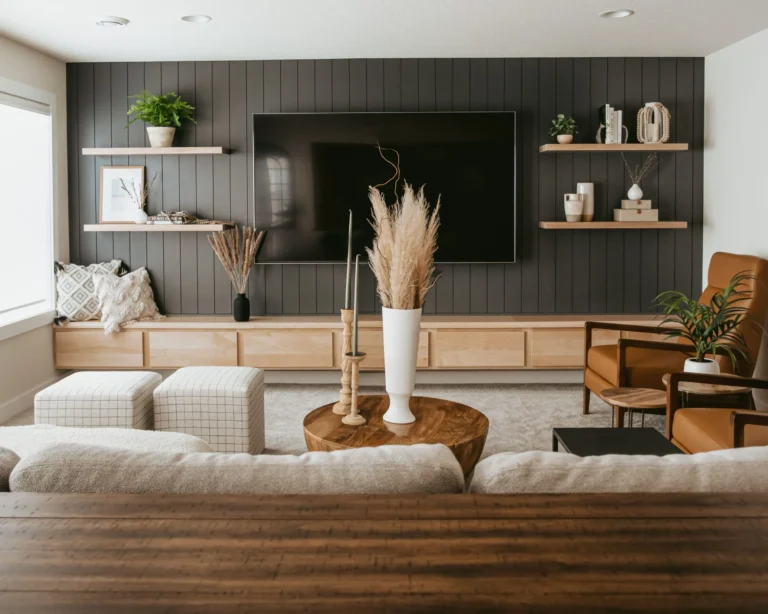When you think about your kitchen, what’s the first thing that comes to mind? For many, it’s the stove where family meals are prepared or perhaps the refrigerator filled with fresh produce and leftovers. Rarely does the humble kitchen sink receive the credit it deserves. Yet, this essential fixture is truly the heart of the kitchen—central to food prep, cleanup, and even design aesthetics.
In this article, we explore the evolution, functionality, styles, materials, and maintenance of the kitchen sink. Whether you’re renovating your kitchen or building a new one, understanding the significance of the kitchen sink will ensure you make a smart, lasting investment.
A Brief History of the Kitchen Sink
Before we dive into materials and styles, it’s worth reflecting on how far the kitchen sink has come. In the early days, people relied on basins filled with water from a well or stream. It wasn’t until the 19th century, with the advent of indoor plumbing, that the modern kitchen sink began to take shape.
Early sinks were often made from stone or porcelain and featured simple designs. Today, kitchen sinks are marvels of both form and function, offering sleek aesthetics and high-end materials. The evolution of the kitchen sink mirrors the evolution of the kitchen itself—from purely functional to the centerpiece of home life.
Why the Kitchen Sink Matters
At first glance, the kitchen sink might not seem like a big deal. But consider this: almost every task in your kitchen involves it. Washing fruits and vegetables, cleaning dishes, filling pots, defrosting meat—the list goes on. It’s not just a passive fixture; it’s a dynamic workstation.
More importantly, a well-designed kitchen sink can make your cooking and cleaning experience significantly more efficient. It can also enhance the overall aesthetic of your kitchen, adding both value and personality to the space.
Choosing the Right Kitchen Sink: Key Factors
When it comes to choosing a kitchen sink, there’s no one-size-fits-all. You need to consider several factors to find the best fit for your home and lifestyle:
1. Size and Configuration
Do you cook frequently? Do you entertain often? If yes, a large, deep sink might be ideal. Double-bowl sinks offer the convenience of multitasking—washing on one side, rinsing on the other. However, single-bowl sinks provide more uninterrupted space for large pots and pans.
2. Mounting Style
-
Top-Mount (Drop-In): Easy to install and often more budget-friendly.
-
Undermount: Sleeker look, easier countertop cleaning, but more costly to install.
-
Farmhouse (Apron Front): Bold, stylish, and great for large tasks, but requires special cabinetry.
-
Integrated: Seamlessly blends with countertop material for a contemporary look.
3. Material
Kitchen sinks come in a wide range of materials, each with pros and cons:
-
Stainless Steel: Durable, affordable, and modern-looking. Great for most kitchens.
-
Cast Iron with Enamel Coating: Classic, heavy-duty, and visually appealing.
-
Fireclay: Resistant to stains and scratches, perfect for a farmhouse aesthetic.
-
Granite Composite: Offers the beauty of stone with the resilience of engineered materials.
Trending Kitchen Sink Styles
The modern homeowner isn’t just concerned with utility. Style plays a huge role in kitchen design. Here are some popular kitchen sink styles that can elevate your space:
1. Workstation Sinks
These multifunctional sinks come with integrated accessories like cutting boards, drying racks, and colanders. Ideal for small kitchens, they maximize workspace and streamline meal prep.
2. Farmhouse Sinks
Farmhouse or apron-front sinks are known for their deep basins and exposed fronts. They bring a rustic charm to the kitchen and are perfect for those who want both function and flair.
3. Corner Sinks
Perfect for optimizing awkward kitchen corners, these are a great space-saving solution for smaller homes.
4. Bar Sinks
Also known as prep sinks, these smaller sinks are ideal for drink stations or islands. They add convenience, especially when entertaining guests.

Kitchen Sink Installation: DIY or Professional?
Installing a kitchen sink might seem straightforward, but it often requires plumbing, carpentry, and sometimes even countertop adjustments. If you’re replacing an old sink with the same dimensions and mounting style, DIY may be feasible. However, for anything more complex—like switching from top-mount to undermount or adding a farmhouse sink—a professional installer is highly recommended.
Proper installation ensures long-term functionality, minimizes the risk of leaks, and preserves your countertops and cabinetry.
Caring for Your Kitchen Sink
A beautiful kitchen sink can quickly lose its charm if not properly maintained. Here are some quick tips for keeping your sink in top shape:
-
Daily Wipe-Down: Rinse and wipe the sink after each use to prevent stains and water spots.
-
Avoid Harsh Chemicals: Especially on enamel or fireclay surfaces. Use mild dish soap instead.
-
Use Sink Grids: Protect the bottom from scratches and heavy pots.
-
Regular Deep Cleaning: Use baking soda and vinegar or specific cleaners based on sink material.

Environmental Considerations
Water conservation is more important than ever, and your kitchen sink plays a role. Here’s how to make your sink more eco-friendly:
-
Install a Low-Flow Faucet: Reduce water usage without compromising performance.
-
Fix Leaks Promptly: Even a slow drip can waste gallons of water a day.
-
Compost Food Scraps: Don’t rely solely on garbage disposals, which can strain septic systems and wastewater treatment.
Smart Kitchen Sinks: The Future Is Here
With the rise of smart homes, the kitchen sink hasn’t been left behind. Some of the latest innovations include:
-
Touchless Faucets: Reduce germs and save water.
-
Built-In Water Filtration Systems: Ensure clean drinking and cooking water.
-
LED Temperature Indicators: Prevent burns by showing water temperature at a glance.
These features not only add convenience but also increase the overall value of your home.
The Kitchen Sink as a Design Focal Point
In open-concept homes, the kitchen sink is often visible from living and dining areas. That’s why more homeowners are choosing sinks that make a visual statement. Whether it’s a matte black granite composite sink or a polished copper farmhouse model, your sink can be a conversation starter.
Pair it with stylish faucets, soap dispensers, and even decorative backsplashes for a cohesive and visually pleasing kitchen design.
Conclusion: The Kitchen Sink Is More Than Just a Basin
In the grand scheme of home design, the kitchen sink might seem like a minor detail. But as we’ve seen, it plays a major role in both the function and form of your kitchen. From washing dishes to preparing gourmet meals, your kitchen sink supports countless daily activities.
So, the next time you’re planning a kitchen upgrade or remodel, give your kitchen sink the attention it deserves. Choose a style that suits your needs, a material that lasts, and a design that reflects your personal taste. Because when it comes to building the perfect kitchen, it all starts with the kitchen sink.











